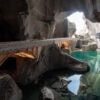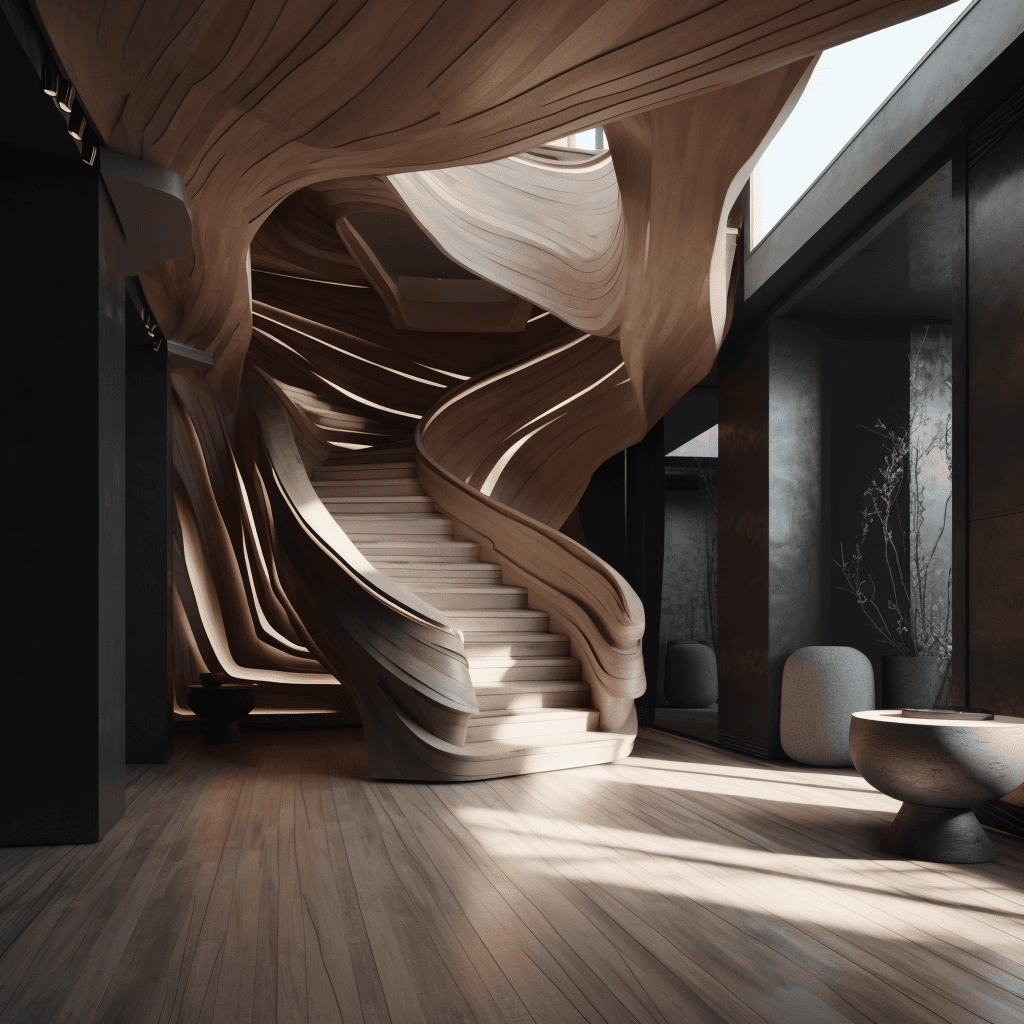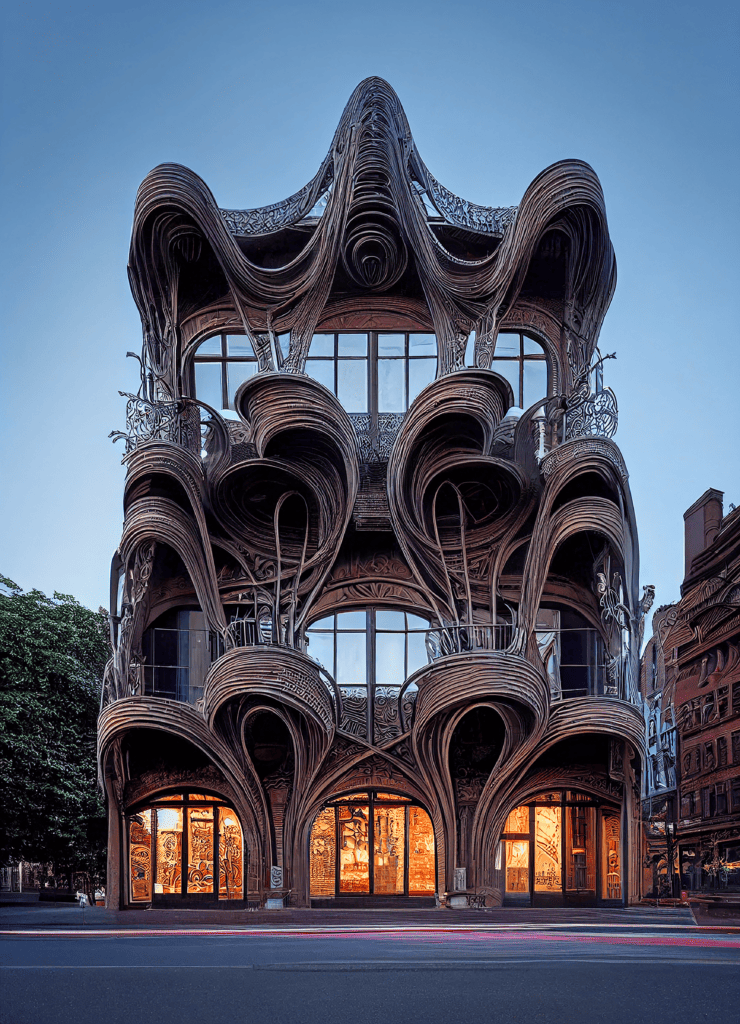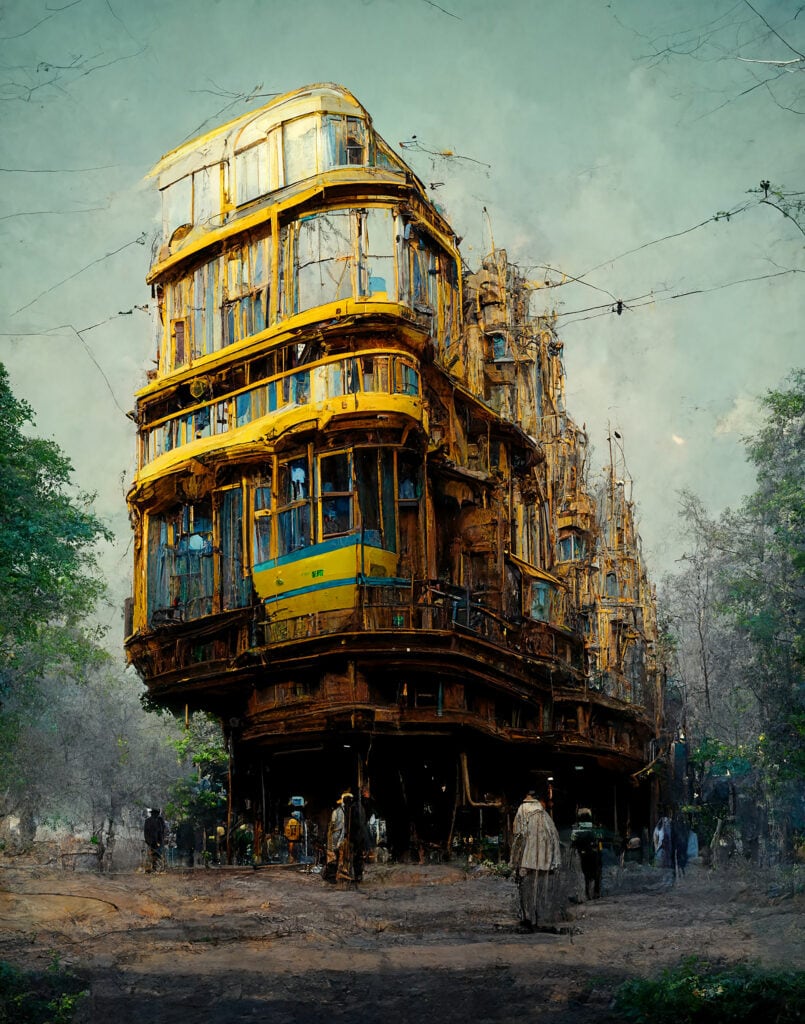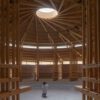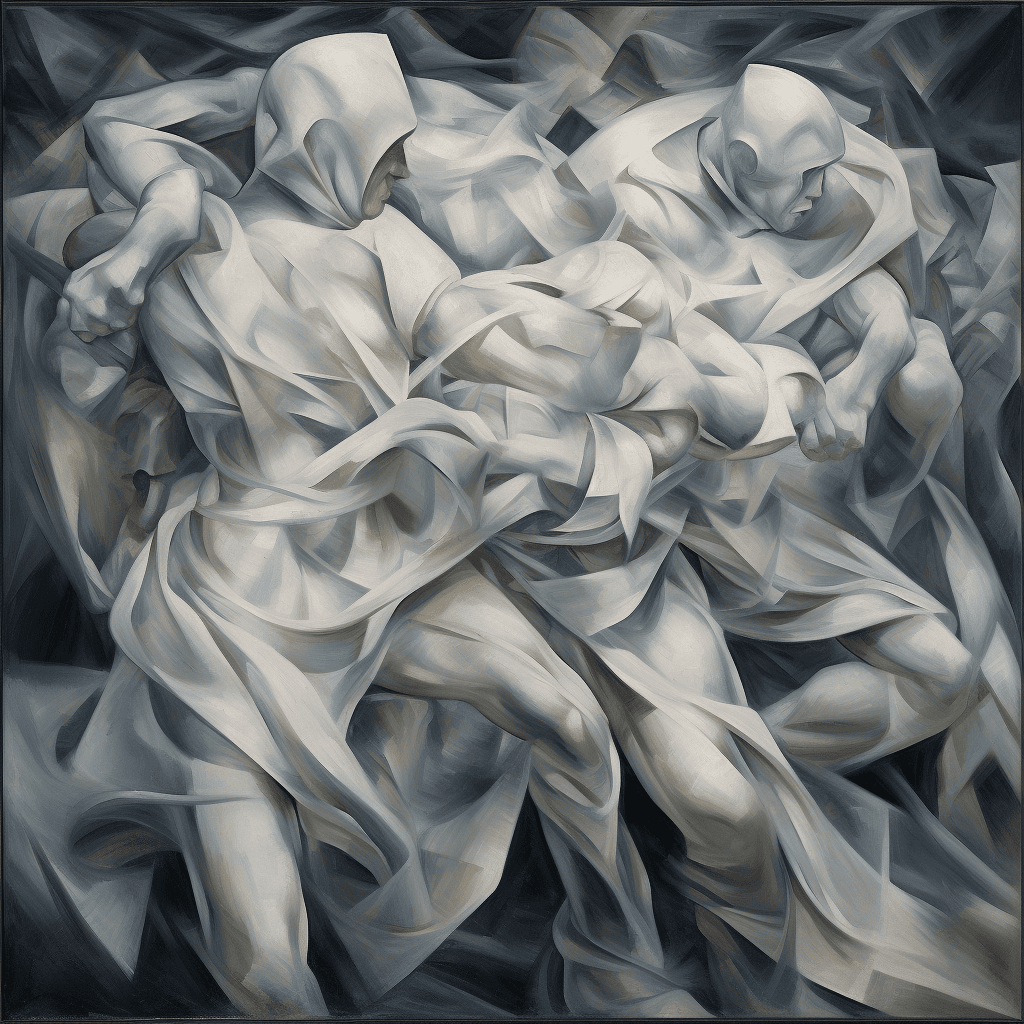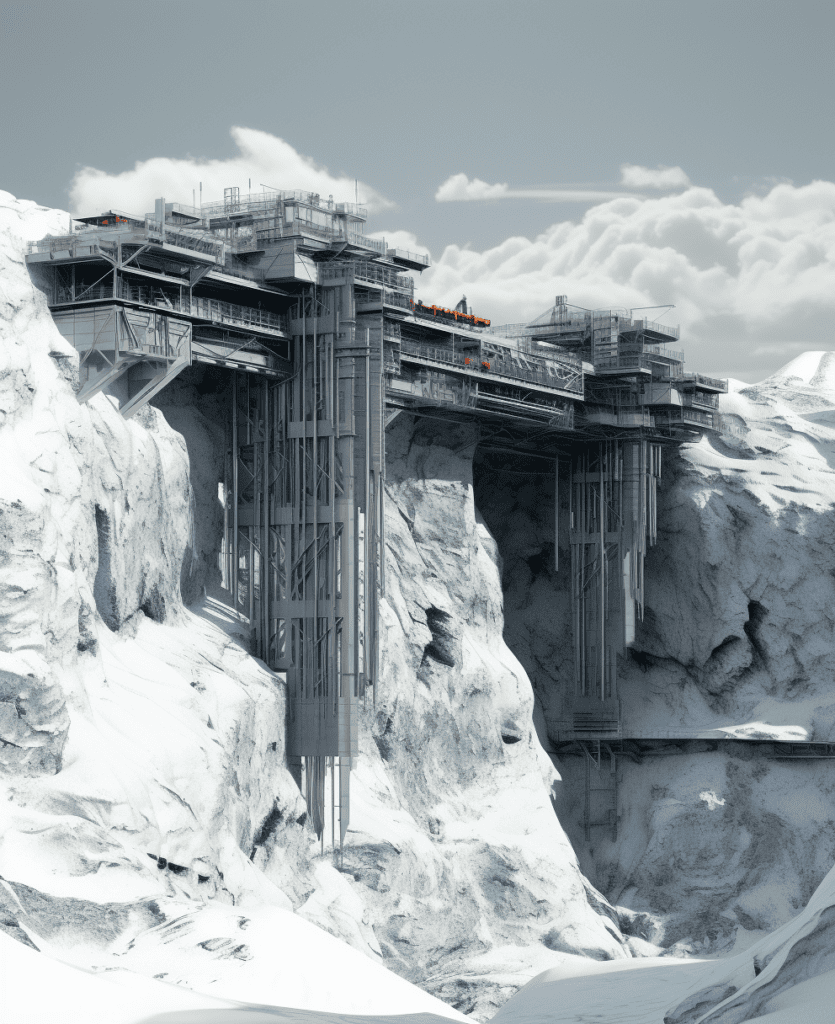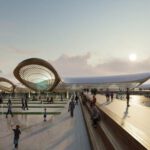The fusion of creativity and artificial intelligence (AI) is reshaping the world of design and architecture. We spoke to three designers who are reshaping the future. Karolin Schmidbaur from COOP HIMMELB(L)AU explains how AI is being used in various project phases without compromising the individuality of the architects. Hassan Ragab shares his views on how AI can promote sustainability and protecting the environment in architecture, but also highlights ethical aspects, and Arturo Tedeschi shows how he draws inspiration from music and film and uses generative AI tools to enrich his designs.
Karolin Schmidbaur, Design Partner and Head of Research
COOP HIMMELB(L)AU
Since 2009, Karolin has been a partner and head of research at Coop Himmelb(l)au and bears joint responsibility for the design portfolio. She holds important roles at the Groninger Museum East Pavilion in the Netherlands, the Central Los Angeles Area High School #9 for the Visual and Performing Arts in downtown Los Angeles, USA, and the Paneum near Linz, Austria, to name just a few.
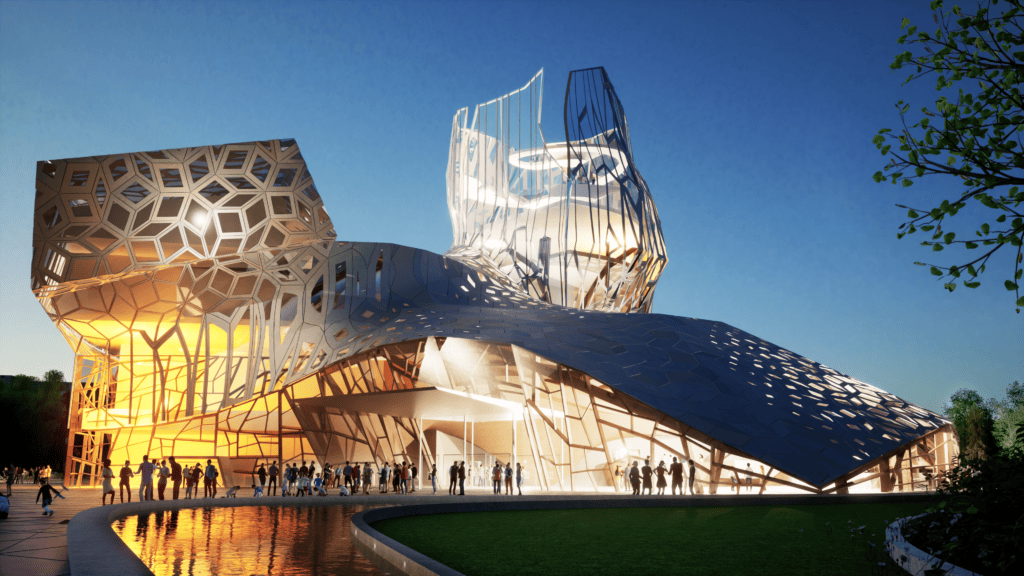
During which steps of carrying out a project do you use AI?
In various steps from design through to the technical details. We work with a network of AI modules that can be incorporated into the workflow at various stages.
To what extent can AI be deployed without losing the individuality of the architect?
I wouldn’t say that’s the case – we use the AI modules when they make sense for the project. It’s only ever parts of stages that we use AI for, not consistently throughout the whole project. The architect defines this process, so individuality is never lost.
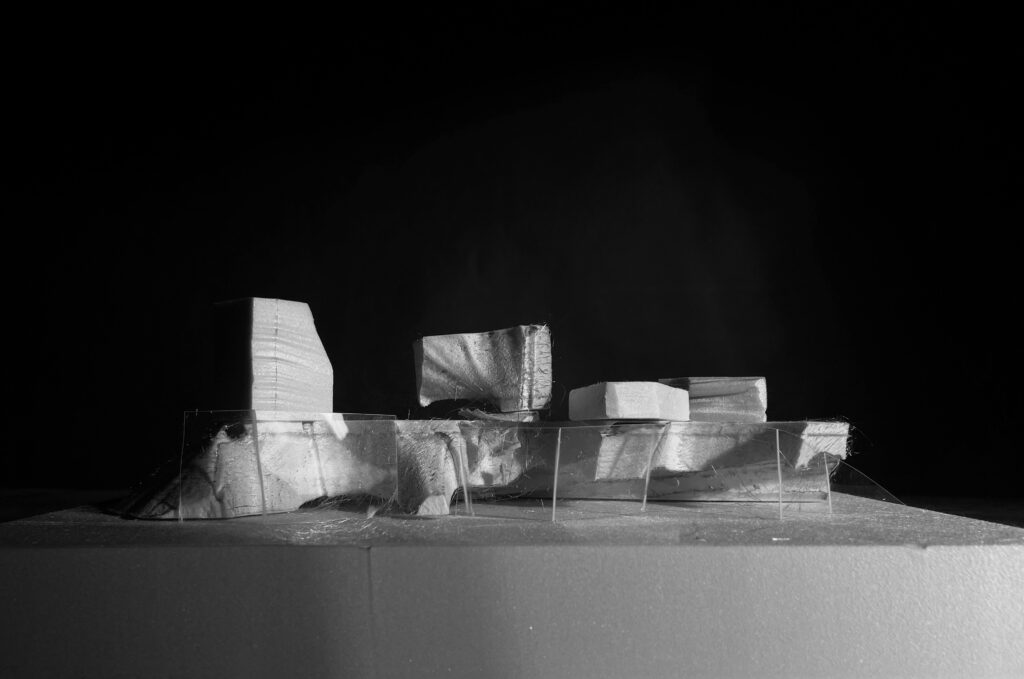
What effect does AI have on the architect’s creativity?
It encourages creativity if you use it intentionally and responsibly.
How similar is the AI model to the final building?
At COOP HIMMELB(L)AU, there’s no such thing as “the AI model”, as AI is used in individual steps. The traditional design and planning process is merely expanded or enriched by these possibilities.
Hassan Ragab / Designer
An Egyptian designer with a background in architecture, who now lives in south California. His experience ranges from exhibition design to product, furniture and textile design, and is strongly linked with calculations, experimenting and digital manufacturing. He is currently providing computer-aided design solutions in the field of architecture, engineering and construction (AEC) for a large architectural project in downtown Los Angeles and at the same time working on developing his own designs.
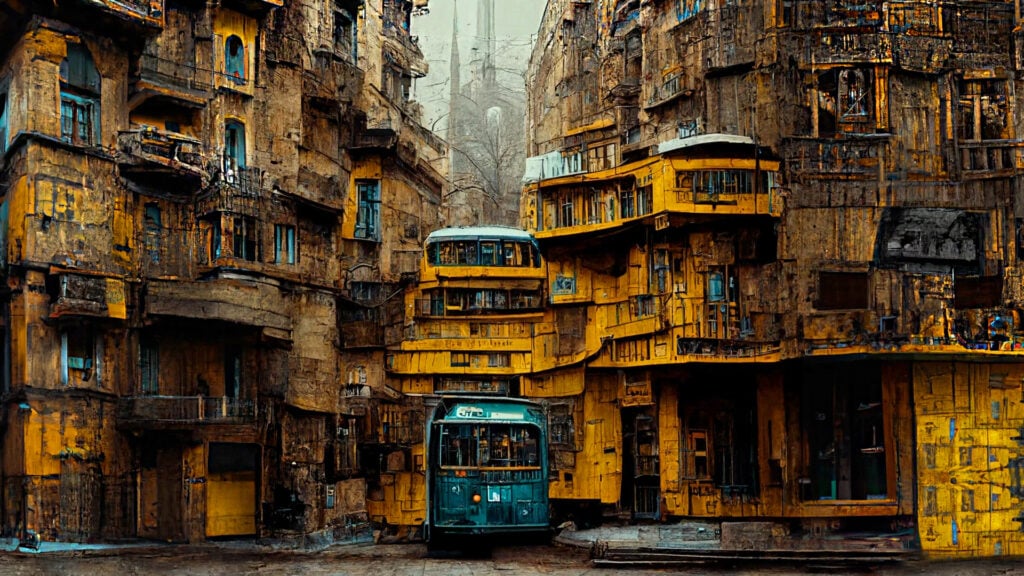
How can AI be used in architecture to improve sustainability and environmental protection?
HR: Let’s think of AI as a calculator for a moment. Before the invention of calculators, scientists had to work out all of their calculations by hand, whereas now they can concentrate on complex matters because there’s a tool that can solve equations for them. If as an architect you want to respond to the issue of environmental protection, you have to consider an awful lot of factors, and that makes it difficult. And although we as people might do our best, our brains only have limited capacity, whereas the intellectual capacity of AI is unlimited. Because AI has access to virtually all scientific data, it can help architects to predict the results and consequences of their work.
Are there any ethical problems with AI?
HR: Absolutely. There is already a certain stigma attached to working with AI. AI is just a tool, similar to a double blade – you can distort work with AI and steal others’ ideas, but it can also be used to create wonderful things. It purely comes down to the intentions of the user, as with any type of technology. You might think that the internet or social media have the same ethical challenges as AI, but the latter is much more powerful and has much more potential. AI is a highly empowering tool – it gives us the possibility to create whatever we can dream of, especially graphics, and that naturally can lead to the technology being misused. But it also gives us the opportunity to create spectacular architectural designs, and that’s what I want to concentrate on. The end result always comes down to the morals of the person using it.
How can buildings designed by AI be integrated into the existing surroundings?
HR: I’m not sure whether I want to integrate my architecture into the real world. I think people often wrongly interpret my work. There are a lot of different aspects to architecture, so you need to act responsibly when putting something in place in real life. I worked in architecture and construction for 13 years and I realised that architecture these days is often used incorrectly. Over the last few years, I’ve seen how architecture is being used as a means to build cultural dominance and geopolitical power, or financial profit. That’s why I’m slowly trying to move out of this sector. Instead of trying to implement my models in real life with real consequences, I’m focusing on exploring how AI can help me immerse myself in the creative and artistic side of architecture. Sooner or later, I’d like to bring one or two of my models to life, but I don’t want to impose a particular style or integrate my buildings into cities. Of course, the buildings that I and other users of AI programs like Midjourney design are often more attractive than the architecture you see in cities, but I don’t think the visual aspect should be the only part that impresses people. In my series of designs, I generated graphics in which a monkey was holding a building – an idea that in reality obviously can’t be implemented. I’m not into constructing buildings according to my design ideas, but rather discovering the potential of architecture, what architecture means and the identity you can discover in yourself through architecture.
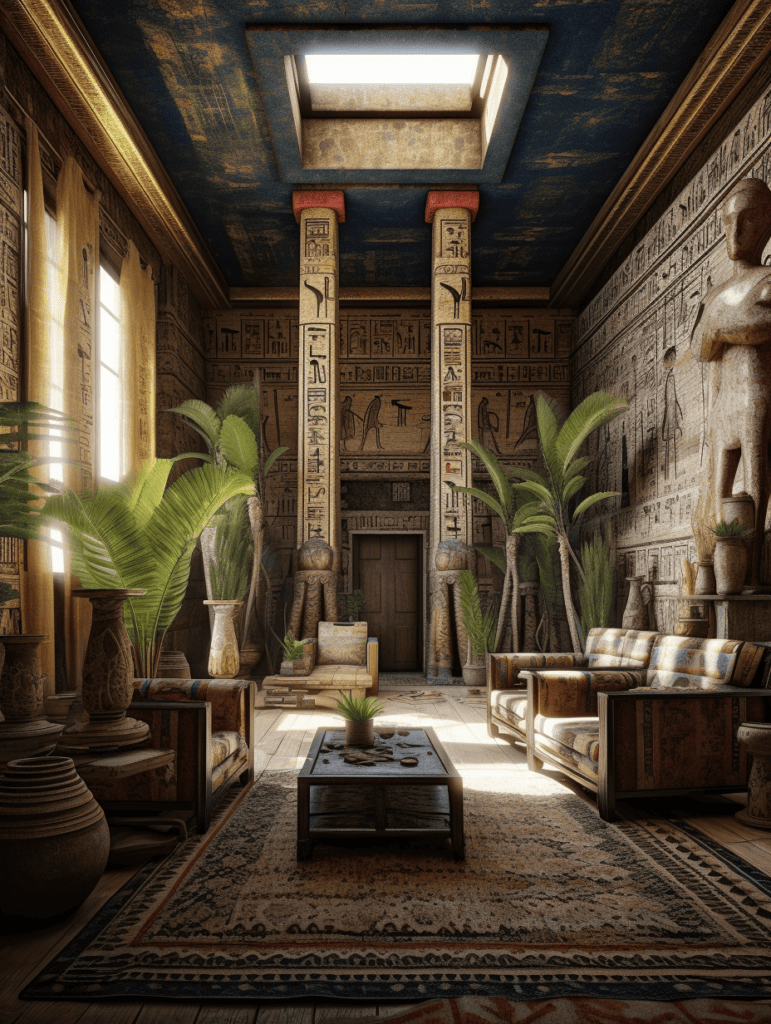
Has AI changed your ideas and your style?
HR: Definitely. I don’t try to answer questions using AI – I try to ask more questions to open my mind. I allow myself to be challenged by AI so I can find different access points to architecture, and I work with it to understand the science and the philosophy behind architecture in more depth. I want to research complex architectural concepts and not just focus on their application.
Arturo Tedeschi / Architect and Computational Designer
Arturo Tedeschi is an Italian architect and computational designer of international renown. He is best known for a sculptural and visionary approach, which is combined with research on progressive design methods, materials and manufacturing technologies. His use of digital technologies blurs the boundaries between various disciplines and places the focus on the semantic and emotional values of properties. Characteristics such as functionality, sustainability and innovation are always accompanied by a vision in which shapes are able to trigger an emotional reaction and inspire users.
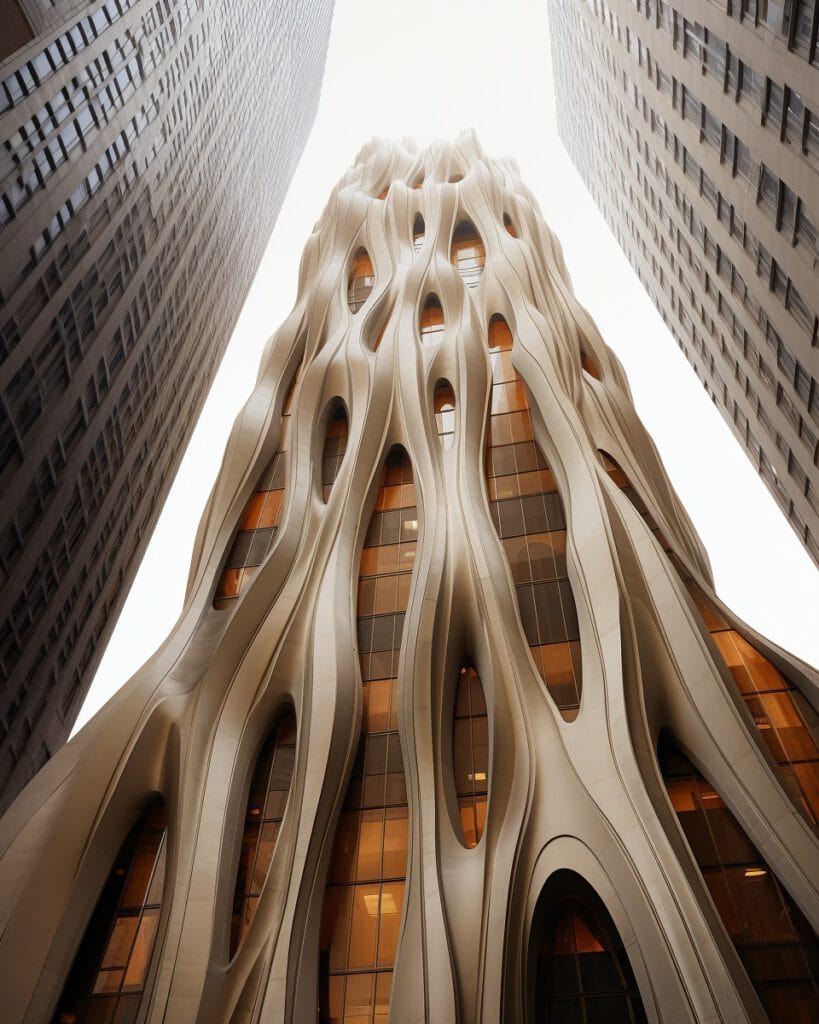
Can you tell us a little about your background and what inspired you to become a designer? What are some of your most noteworthy design projects or pieces of work that you are especially proud of?
I grew up in the picturesque south of Italy, and when I was a child, I nurtured two great passions: making complex cardboard buildings (true to scale) and immersing myself in the world of my beloved Commodore 64, one of the pioneering home computers of its time. My fascination mainly centred on developing basic programs and creating animated designs. At the time, I didn’t know that computer-aided art would anchor in my subconscious a strong feeling for abstraction and the ability to perceive shapes as complex relationships between numbers. Today, my career path has taken me into the fascinating domain of computational design, a discipline at the interface of art and technology, inspiration and control. You could say that I never really gave up the childhood hobby that once shackled my imagination. Although I don’t consider any one project to be my favourite, my job entails the perpetual search for innovative tools and methods. As such, my latest project always embodies the synthesis of who I am today. I recently worked on the stage design for the world tour of musician Illenium, a project that united a narrative, algorithms, AI and above all the ambition of creating a fascinating extension of the artist’s visual language.
How do you approach the beginning stage of a design project? What steps do you take to gather inspiration and define the design concept?
Although my work might seem very technical, I look for inspiration outside the specific professional context. Cinema and music have always been major sources of inspiration for me. Music has an immensely suggestive power, and its mathematical structure can be studied and systematically transferred to the geometric relationships between shapes. Cinema inspires me because of its intrinsic ability to visualise the future and make it tangible. Up until a few years ago, I laid out the initial concept using sketches or mood boards. Now, using generative AI tools (text to image or sketch to image), it’s possible to explore numerous iterations and quickly develop only the most interesting ones. It’s only after this point that algorithms and complex three-dimensional models come into play.
How do you stay up to date with the latest design trends and technologies? Can you give examples of how you’ve incorporated emerging trends into your work?
It’s becoming more and more difficult to keep up with innovation (as we saw last year with the development of a variety of AI-based platforms and tools). I start using a new technology if I believe that it can quickly implement what my brain can imagine, or, in the case of AI, when it can enrich my vocabulary and my language. In the case of the stage design that I mentioned before, there was the desire to create a form of archetypal architecture that is far removed from the technological stereotype and to regularly use generative AI tools to develop a language that is enriched by shapes and details that weren’t originally part of my idea. With this in mind, I didn’t use a tool to automate design processes, but rather as a platform to increase my capacity for expression.
Which tools and software do you use in your design work? Are there specific design tools or techniques that you find particularly effective or innovative?
Algorithms are the extension of my mind, and algorithmic design (especially Grasshopper 3D) enables designers to overcome the limitations of traditional CAD software and 3D computer graphics software, and reach a degree of complexity that goes far beyond human interaction with digital objects. The majority of my work results from translating ideas into code and code into machine-readable files.
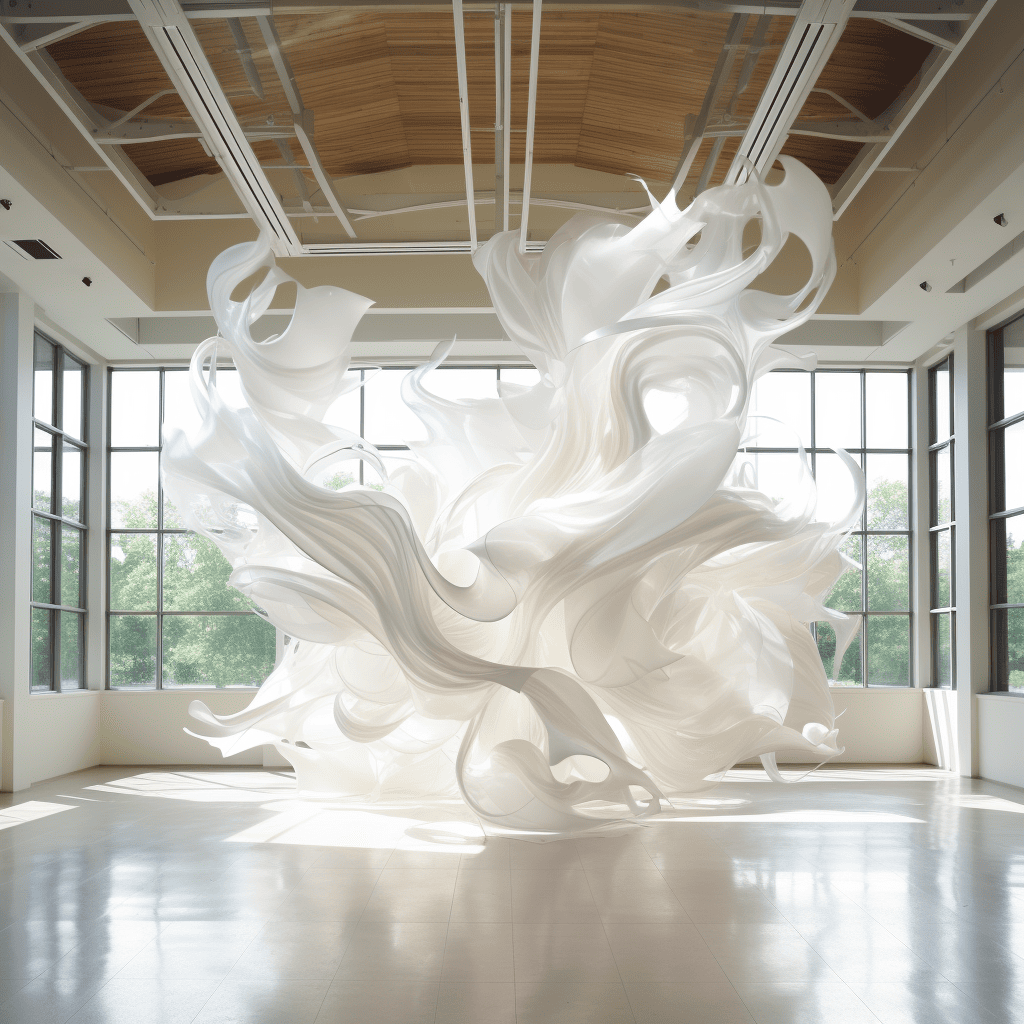
What do you think others in the industry take from your design work? What makes your application unique?
For me, qualities like functionality, sustainability and innovation are always accompanied by a vision in which the shapes can evoke an emotional reaction and inspire users. I have always tried to evade the case of technological fetishism by pursuing the idea of a new generation of object-oriented artworks that authentically try to achieve the complexity of digital art, an area with fluid boundaries in which art and digital technologies blend and new cultural and social meanings are encouraged.
In the rapidly evolving world of design, which future trends or challenges do you see for designers like you over the next few years? Especially in relation to AI?
It’s risky making predictions, but we’re on the verge of a new Copernican revolution that will bring real technical and creative advantages to the concept of intelligence – creativity and the way in which machine thinking can influence the world around us – and connect us once again with an authentic human dimension. I think today’s greatest challenge is training: educating the next generation of designers with technological and environmental awareness. The real challenge will be uniting man and machine.


